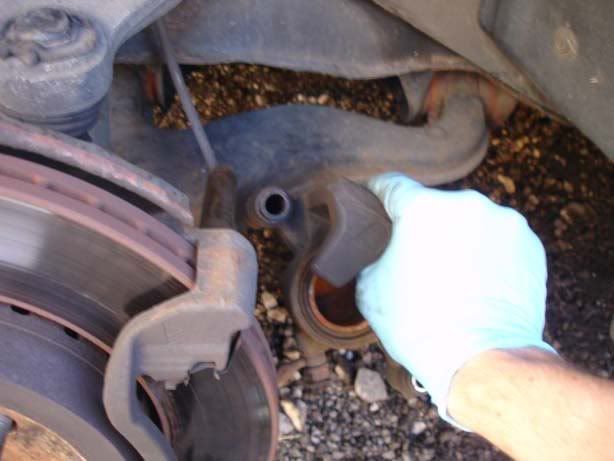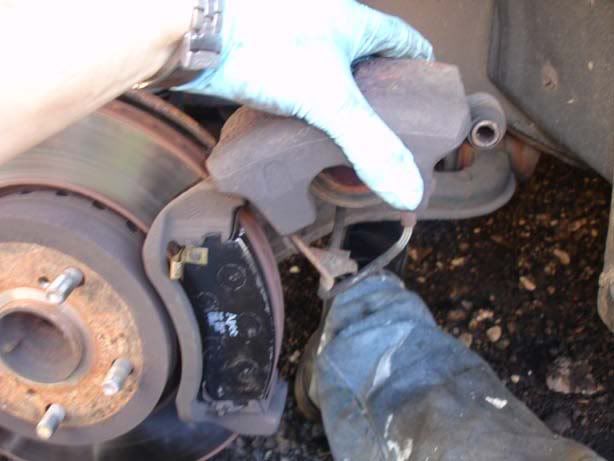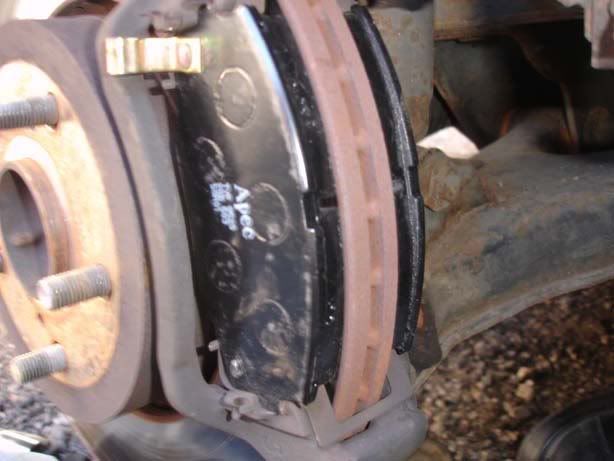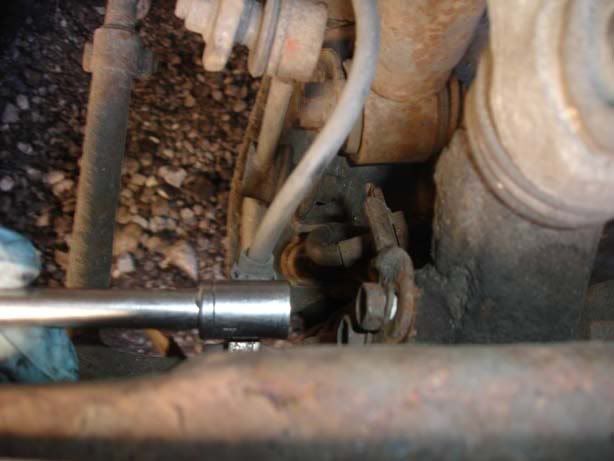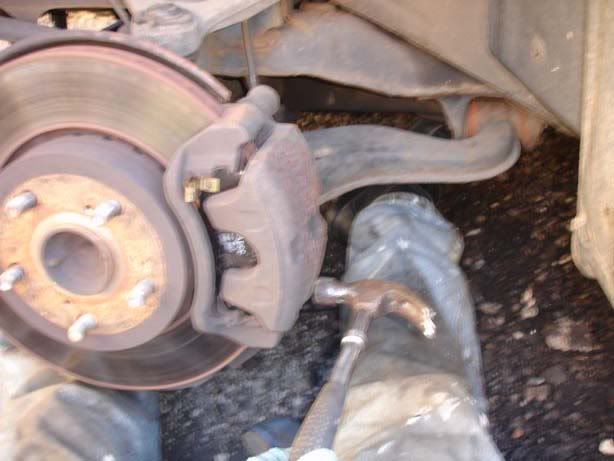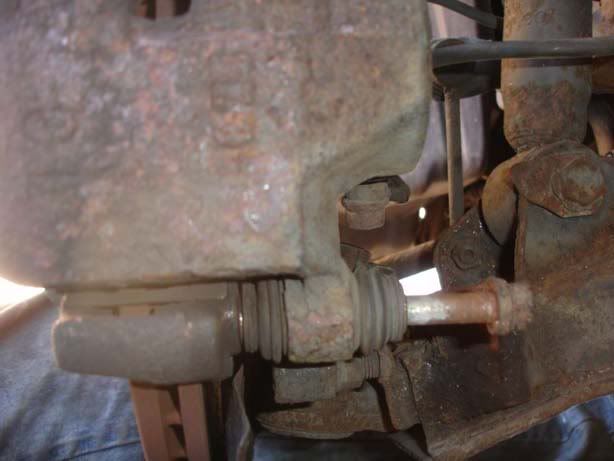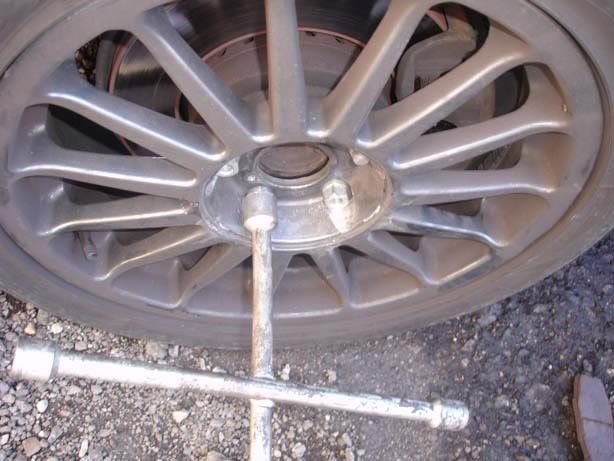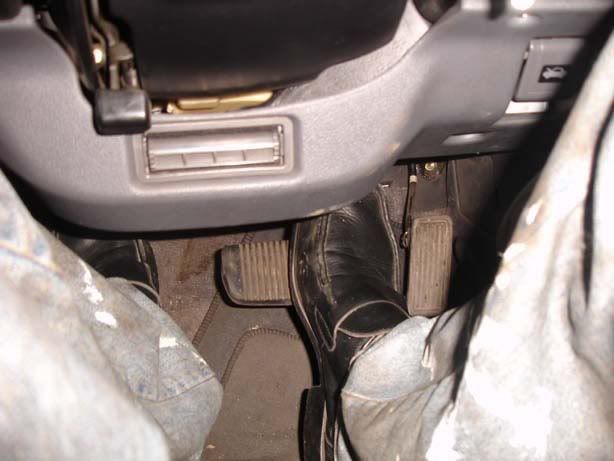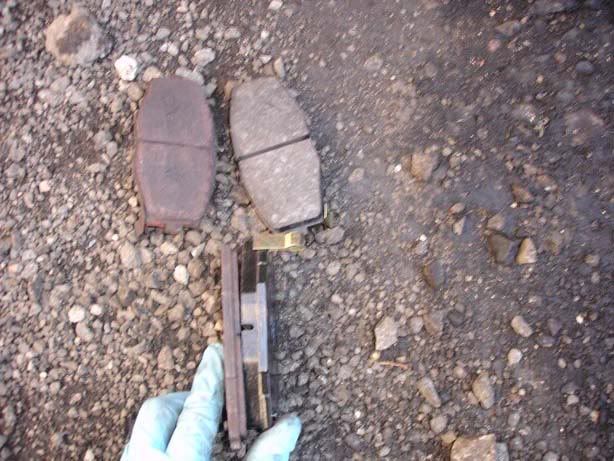Step 1 - 'Crack off' the wheel nuts while the car's weight is on (don't remove them)
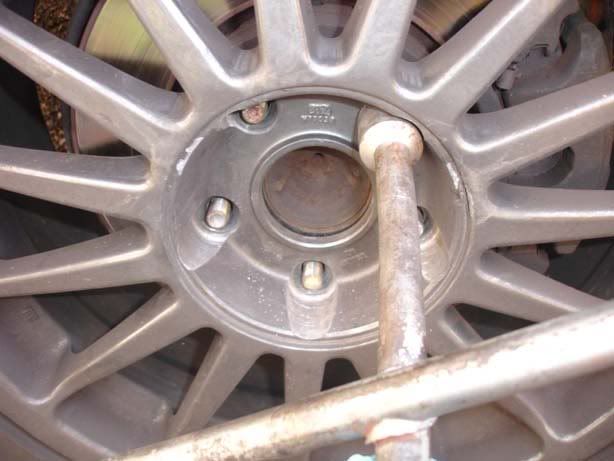
Step 2 - Jack the car up
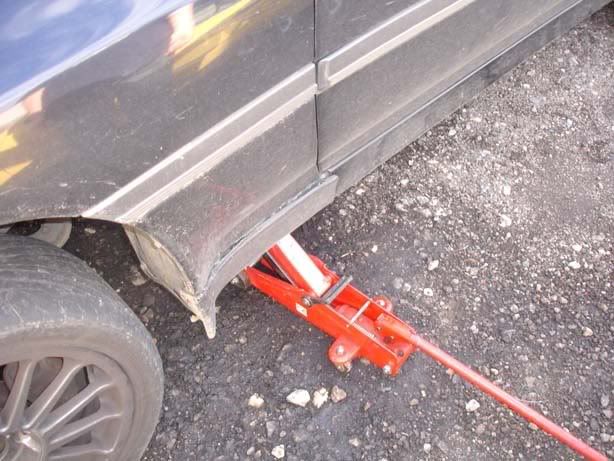
Step 3 - Undo the wheel nuts and remove the wheel
Step 4 - Get yourself some new pads
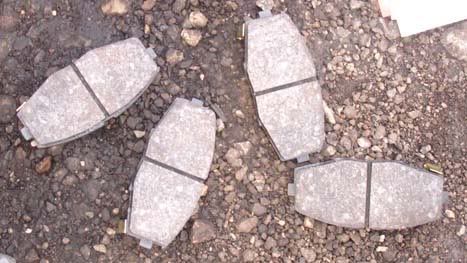
Step 5 - Undo the 14mm bolt at the bottom of the caliper
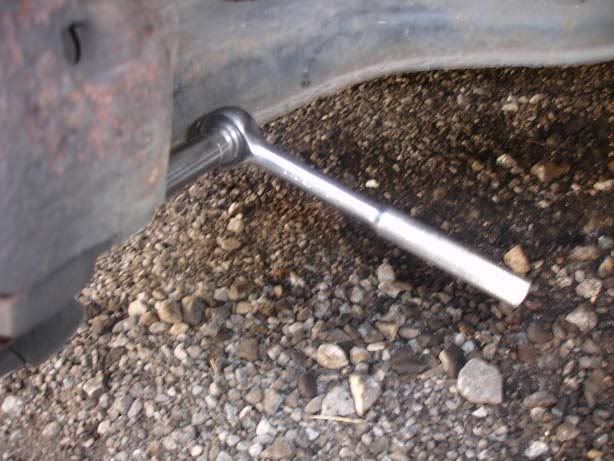
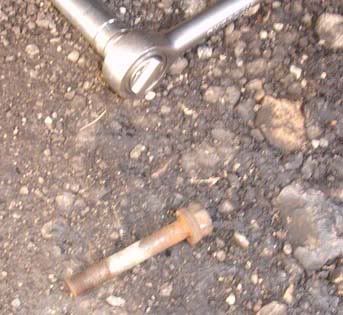
Step 6 - Remove the two 12mm bolts holding the brake hose clip on (note how the hose goes for refitting)
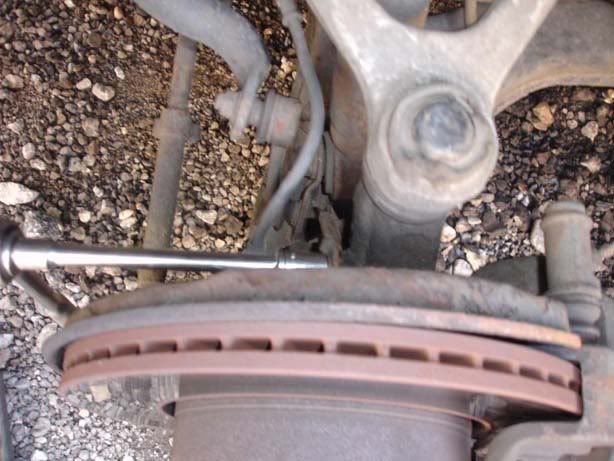
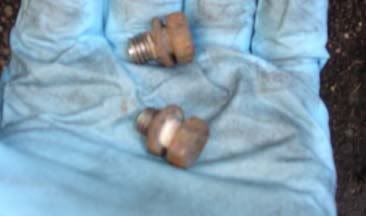
Step 7 - Pull the bottom of the caliper up (if stiff, use the back of a claw hammer to lever it)
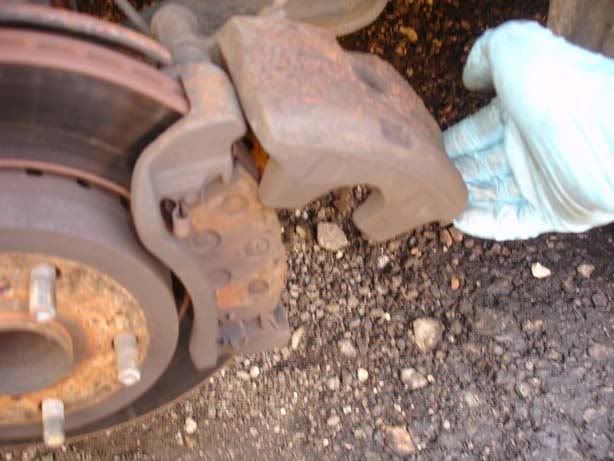
Step 8 - Remove the top off the brake fluid reservoir and place a rag around it (or some kitchen towel) to catch fluid that spills over
Note : Brake fluid is hygroscopic which means it absorbs water and will proceed to do so from the surrounding air. You should only leave the fluid reservoir
open for a small length of time to reduce degradation of fluid. Also it's nasty stuff, if you get it on paint work wipe it off, same for clothes and your
skin
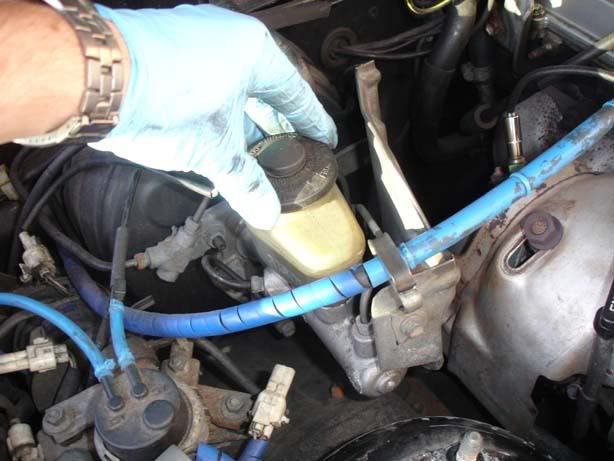
Step 9 - The caliper should now freely slide of the top pin (If it doesn't then you can lightly sand and grease it to free it up) and you'll be able to pull
the old pads out. Note the order of any shims (metal pieces between the caliper and pads) if you have any - I didn't
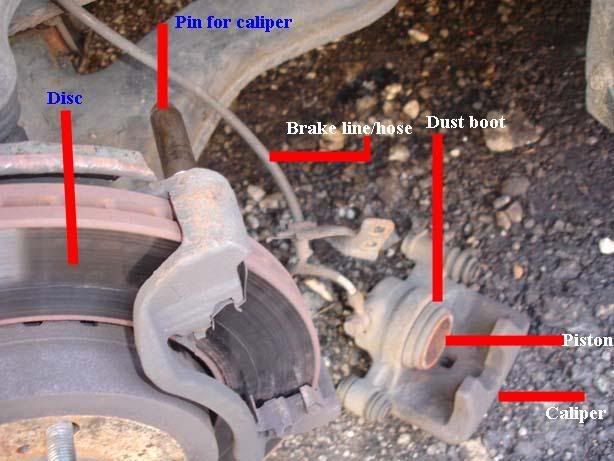
Step 10 - Put one of the old pads in the caliper and use a large g-clamp to wind it back in. There will be quite bit of resistance to this but you need to
do it until the piston is flush with the body of the caliper
The act of pushing the piston in will force brake fluid back up the system to the reservoir and this is the time it may overflow (depending on the amount of
fluid in there and amount of pad wear)
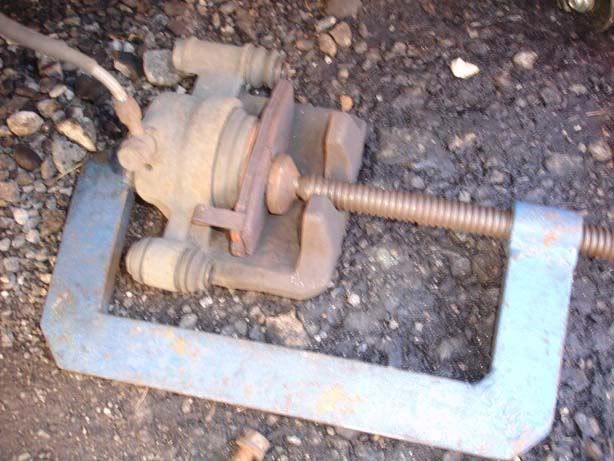

Step 2 - Jack the car up

Step 3 - Undo the wheel nuts and remove the wheel
Step 4 - Get yourself some new pads

Step 5 - Undo the 14mm bolt at the bottom of the caliper


Step 6 - Remove the two 12mm bolts holding the brake hose clip on (note how the hose goes for refitting)


Step 7 - Pull the bottom of the caliper up (if stiff, use the back of a claw hammer to lever it)

Step 8 - Remove the top off the brake fluid reservoir and place a rag around it (or some kitchen towel) to catch fluid that spills over
Note : Brake fluid is hygroscopic which means it absorbs water and will proceed to do so from the surrounding air. You should only leave the fluid reservoir
open for a small length of time to reduce degradation of fluid. Also it's nasty stuff, if you get it on paint work wipe it off, same for clothes and your
skin

Step 9 - The caliper should now freely slide of the top pin (If it doesn't then you can lightly sand and grease it to free it up) and you'll be able to pull
the old pads out. Note the order of any shims (metal pieces between the caliper and pads) if you have any - I didn't

Step 10 - Put one of the old pads in the caliper and use a large g-clamp to wind it back in. There will be quite bit of resistance to this but you need to
do it until the piston is flush with the body of the caliper
The act of pushing the piston in will force brake fluid back up the system to the reservoir and this is the time it may overflow (depending on the amount of
fluid in there and amount of pad wear)


